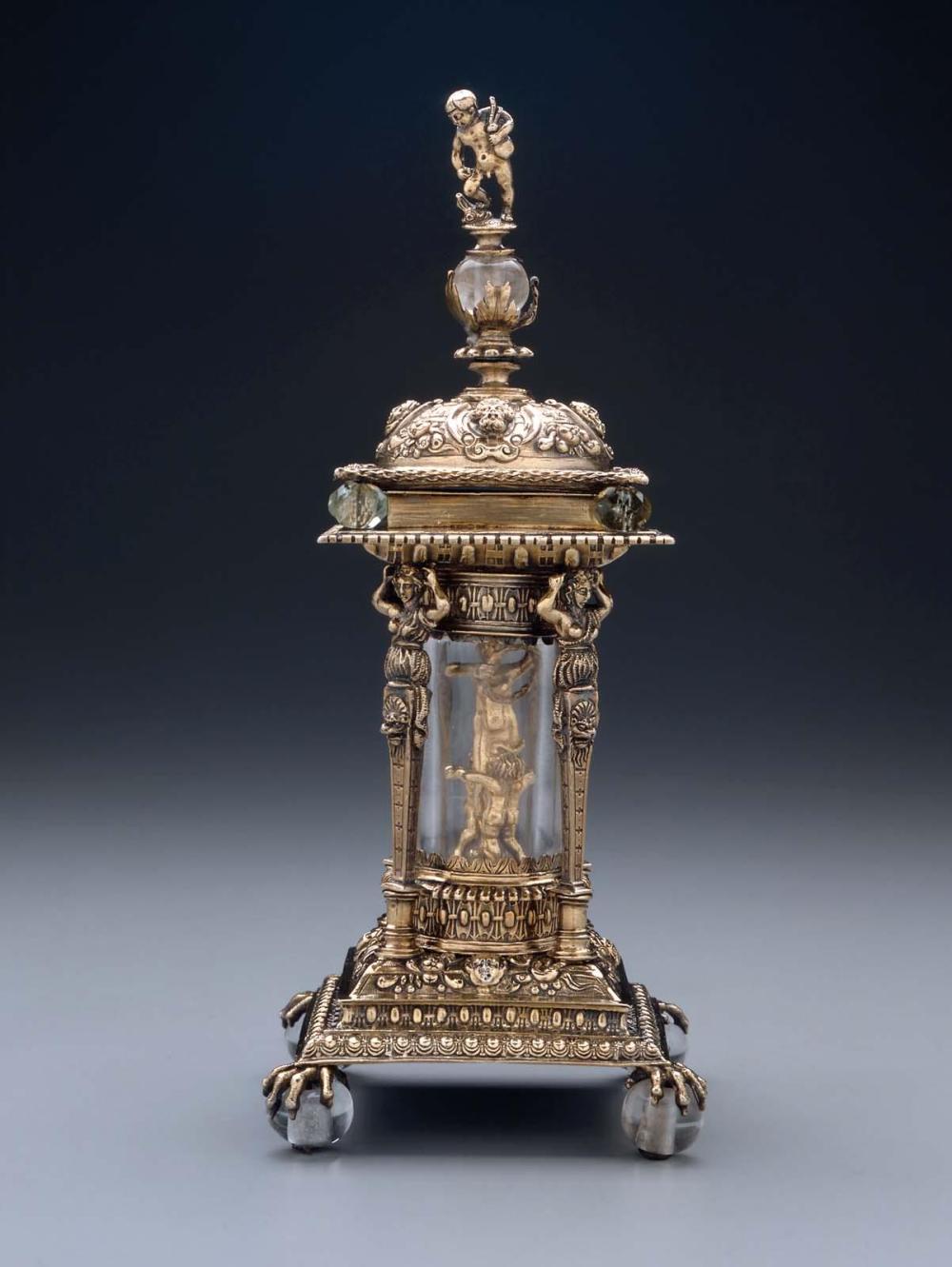Advanced Search
Architectural salt
Possibly made by: Affable Partridge (English, active 1554–1579)
English (London)
1577–78
Object Place: Europe, London, England
Medium/Technique
Silver gilt, rock crystal
Dimensions
H. 17.9 (7 1/16 in.); W. 7.6 cm (3 in.); Weight 345.9 gm (11 oz 2 dwt)
Credit Line
Theodora Wilbour Fund in memory of Charlotte Beebe Wilbour
Accession Number51.1618a-b
CollectionsEurope
ClassificationsSilver
DescriptionThe square base of the salt rests on four claw feet, each grasping a crystal ball; the edge is stamped with two bands of ovolo decoration. On the corners of a cushion shaped base, embossed with fruit clusters surrounding applied masks, four pedestals rise to caryatid figures supporting the upper section of the salt. In the center stands a figure of Venus holding a wreath above her head. She is flanked by two putti, encircling her with joined hands. The group is enclosed by a rock crystal cylinder that is fitted into a collar above and below; the lower fitting is stamped with an egg-and-dart pattern and a fluted border- the upper fitting repeats the egg-and-dart decoration. The top section of the salt is composed of a square flange with a dentiled rim, the underside of which is stamped with an egg-and-dart pattern. The receptacle for salt is set within a square that is engraved on the corners with scrolling foliage. The removable cover is square, with a raised dome chased with fruit and strapwork flanking an applied mask on each side. The edges are finished with a textured applied wire, and the corners are engraved with scrolling foliage and set with glass beads. The finial is composed of a crystal ball supported on a calyx, surmounted by a figure of a putto holding a bagpipe. The square base of the salt is formed, embossed, and chased, with moldings composed of die-struck wires applied to the rim. The cast claw feet with crystal mounts are soldered to the corners of the base; a pin with a decorated rivet secures each crystal foot. The central section of the salt is composed of the cast sculptural group centered in the rock crystal cylinder that is supported on moldings composed of die-struck and formed wires. The four cast and chased caryatid pillars rest on fabricated bases; they are soldered at the top to the die-struck upper molding. The well for salt is raised and engraved. The cover of the salt is formed of a single sheet that is embossed, chased, and engraved, with applied cast masks and cut wire borders. The cast finial is riveted to the rock crystal ball; the supporting calyx has been repaired with soft solder, and the three faceted glass beads on the corners of the cover are replacements. The fourth is lacking.
Marks
On underside of base, maker's mark, a bird in a shaped shield (Jackson, 1921, p. 104; rev. ed. 1989, p. 93); lion passant; date letter U (struck twice); leopard's head crowned
InscriptionsEngraved on underside of flange, LONDON 1577
ProvenanceDecember 11, 1902, sale, Christie, Manson and Woods, London, lot 62, to Crichton Brothers, London. By 1903, John Augustus Holmes, Renfrewshire, Scotland. John Crichton-Stuart, 4th Marquess of Bute (1881–1932); How, Edinburgh; 1951, sold by How to the MFA for $14,112.50. (Accession Date: September 13, 1951)



